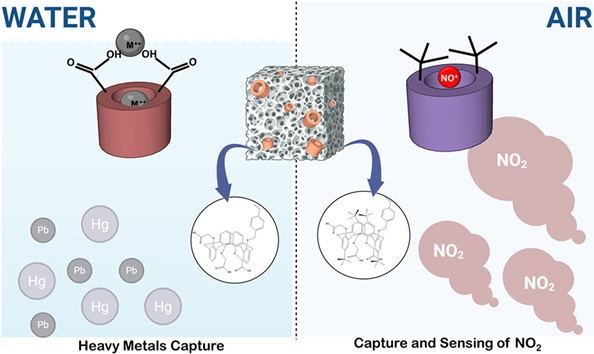Last 10 IPCB CT publications on ISI journals
1) Neuraminidase 1 secondary deficiency contributes to CNS pathology in neurological mucopolysaccharidoses via brain protein hypersialylation
T.Xu, R.Heon-Roberts, T.Moore, P.Dubot, X.Pan, T.Guo, C.W.Cairo, R.J.Holley, B.Bigger, T.M.Durcan, T.Levade, J.Ausseil, B.Amilhon, A.Gorelik, B.Nagar, S.Khan, S.Tomatsu, L.Sturiale, A.Palmigiano, I.Röckle, H.Thiesler, H.Hildebrandt, D.Garozzo, A.V.Pshezhetsky
DOI:
https://doi.org/10.1172/JCI177430
Mucopolysaccharidoses (MPS) are lysosomal storage diseases caused by defects in catabolism of glycosaminoglycans. MPS I, II, III, and VII, which are associated with lysosomal accumulation of heparan sulphate (HS), manifest with neurological deterioration and currently lack effective treatments. We report that neuraminidase 1 (NEU1) activity is drastically reduced in brain tissues of patients with neurological MPS and mouse models but not in neurological lysosomal disorders without HS storage. Accumulated HS disrupts the lysosomal multienzyme complex of NEU1 with cathepsin A, β-galactosidase (GLB1), and glucosamine-6-sulfate sulfatase (GALNS), leading to NEU1 deficiency and partial GLB1 and GALNS deficiencies in cortical tissues and induced pluripotent stem cell-derived (iPSC-derived) cortical neurons of patients with neurological MPS. Increased sialylation of N-linked glycans in brains of patients with MPS and mice implicated insufficient processing of sialylated glycans, except for polysialic acid. Correction of NEU1 activity in MPS IIIC mice by lentiviral (LV) gene transfer ameliorated previously identified hallmarks of the disease, including memory impairment, behavioral traits, and reduced levels of excitatory synapse markers VGLUT1 and PSD95. Overexpression of NEU1 also restored levels of VGLUT1/PSD95-positive puncta in cortical iPSC-derived MPS IIIA neurons. Our results demonstrate that HS-induced secondary NEU1 deficiency and aberrant sialylation of brain glycoproteins constitute what we believe is a novel pathological pathway in the neurological MPS spectrum crucially contributing to CNS pathology.

2) Mono-allelic p.R37H Dehydrodolichyl Diphosphate Synthase variants lead to protein glycosylation defects, aberrant lipid profiles and interneuron scarcity in a novel mouse model of progressive epileptic encephalopathy
A.Da Silva, S.B.Tene Tadoum, I.J.J.Muffels, R.Budhraja, L.Sturiale, A.Messina, M.Giladi, M.Taherzadeh, M.Fazeli, E.Bonneil, S.Khan, D.te Vruchte, Y.Yamanaka, G.Di Cristo, F.F.Hamdan, F.M.Platt, S.Tomatsu, Y.Haitin, T.Kozicz, P.Thibault, D.Garozzo, A.Pandey, E.Morava, E.Rossignol, A.V.Pshezhetsky
DOI:
https://doi.org/10.1101/2025.08.15.670547
Developmental delay and seizures with or without movement abnormalities (OMIM 617836) caused by heterozygous pathogenic variants in the
DHDDS gene (DHDDS-CDG) is a rare genetic disease that belongs to the progressive encephalopathy spectrum. It results in developmental delay in affected children, accompanied by myoclonus, seizures, ataxia and tremor, which worsens over time.
DHDDS encodes a subunit of a DHDDS/NUS1 cis-prenyltransferase (
cis-PTase), a branch point enzyme of the mevalonate pathway essential for N-linked glycosylation. We describe the first mouse model of this disease,
DhddsR37H+/- strain, heterozygous for the human recurrent de novo c.110G>A:p.R37H pathogenic variant.
DhddsR37H+/- mice present with seizures, myoclonus and memory deficits associated with reduced density or/and maturity of inhibitory interneurons in the cortex. Multiomics analyses of mouse CNS tissues, together with the enzymatic/structural characterization of the R37H DHDDS mutant protein, reveal that the variant produces a catalytically inactive enzyme and results in a brain dolichol deficit, aberrant glycosylation of brain glycoproteins, including those involved in synaptic transmission, and major perturbations in the CNS proteome and lipidome. Acetazolamide, a carbonic anhydrase inhibitor clinically approved for treatment of glaucoma, epilepsy, and intracranial hypertension, and successfully used "off-label" to treat genetic movement disorders, drastically reduces seizure susceptibility to pentylenetetrazol in
DhddsR37H+/- mice, suggesting potential therapeutic value of using this drug in human DHDDS-CDG patients. Together, our results define
cis-PTase as a master regulator of CNS development and function and establish that its monoallelic debilitating variants cause a novel Congenital Disorder of Glycosylation, associated with aberrant levels of neuronal proteins and lipids.

3) Sustainable biocomposites from polybutylene succinate reinforced with glochids: Combining waste valorization with improved material properties and accelerated biodegradability
F.Marchetta, L.D’Arienzo, L.Di Maio, L.Botta, M.C.Mistretta, P.Rizzarelli, M.Leanza, P.Scarfato
DOI:
https://doi.org/10.1016/j.coco.2025.102597
This study presents the development and characterization of novel biodegradable biocomposites composed of polybutylene succinate (PBS) reinforced with glochids, a fibrous agro-food waste from
Opuntia ficus-indica fruits. With their naturally barbed surface, glochids offer the potential to enhance interfacial adhesion with the polymer matrix, contributing to improved composite performance. The research aligns with circular economy principles by transforming an abundant byproduct into a functional reinforcement, reducing waste while providing sustainable materials entirely derived from renewable resources with enhanced properties. Biocomposites with different glochids loadings (14, 20, and 30 wt%) were prepared using twin-screw extrusion and subjected to comprehensive physical-mechanical characterization (thermal and FT-IR spectroscopy measurements, morphological analyses, tensile tests) and biodegradability analyses in compost. The addition of glochids resulted in improved mechanical properties, including increased Young’s modulus (up to a maximum of ca. 70% for the most loaded system) and stiffness, with an enhancement in heat deflection temperature (HDT) of over 10°C, suggesting suitability for high-temperature applications. Moreover, despite the fact that glochids induced an initial increase in hydrophobicity, compost burial tests revealed that the natural filler accelerated degradation within 90 days, demonstrating improved end-of-life performance. These findings highlight the potential of PBS/glochids biocomposites as eco-friendly alternatives to conventional plastics for applications such as packaging, consumer goods, and automotive interiors. By promoting waste valorization, these materials align with the principles of a circular economy, fostering more sustainable production and consumption practices.
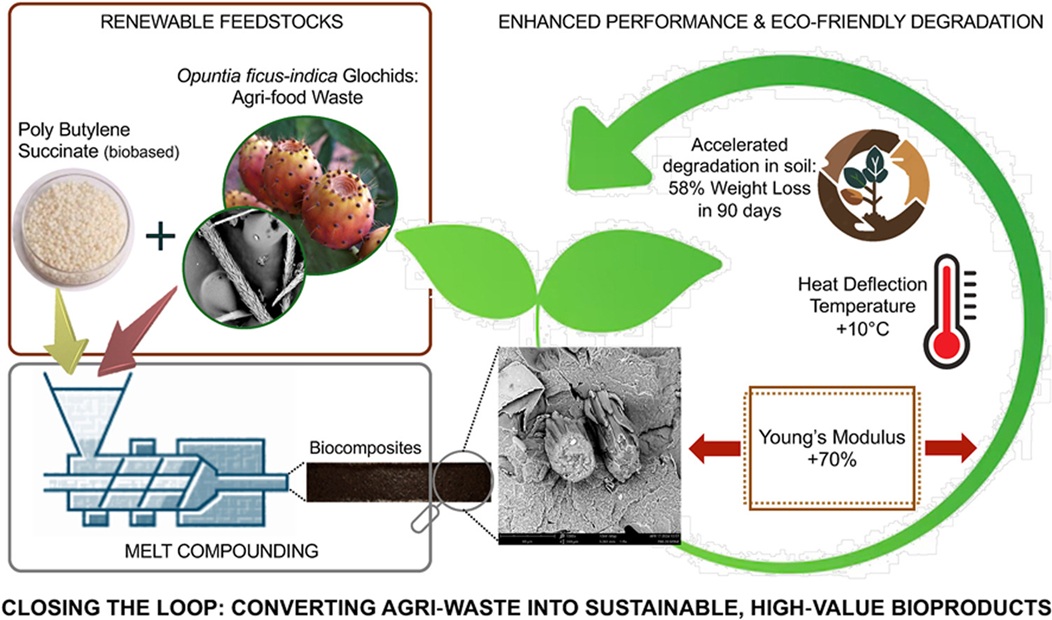
4) PP-Based Blends with PVP-I Additive: Mechanical, Thermal, and Barrier Properties for Packaging of Iodophor Pharmaceutical Formulations
M.Leanza, D.Carbone, G.Poggi, M.Rapisarda, M.Baiamonte, E.Spina, D.Chelazzi, P.Baglioni, F.La Mantia, P.Rizzarelli
DOI:
https://doi.org/10.3390/polym17182442
The influence of minor components on leaching molecular iodine (I2) through polypropylene (PP)-based packaging from a povidone iodine-based (PVP-I) formulation, simulating an ophthalmic application, was evaluated. I2 is a cheap, broad-spectrum, and multi-target antiseptic. Nevertheless, it is volatile, and the prolonged storage of I2-based formulations is demanding in plastic packaging because of transmission through the material. Therefore, we explored the possibility of moderating the loss of I2 from an iodophor formulation by introducing small amounts of molecular iodine into the polymer material commonly used in eyedropper caps, i.e., PP. Thus, PP was blended via an extrusion process with a polymeric complex containing iodine (such as PVP-I) or with a second polymeric component able to complex the I2 released from an iodophor solution. The aim of this work was to introduce I2 into PP-based polymer matrices without using organic solvents and indirectly, i.e., through the addition of components that could generate molecular iodine or complex it in the solid phase, as I2 is heat-sensitive. To increase the miscibility between PP and PVP-I, poly(N-vinylpyrrolidone) (PVP) or a vinyl pyrrolidone vinyl acetate copolymer 55/45 (Sokalan) were added as compatibilizers. The PP-based binary and ternary blends, in granular or sheet form, were characterized thermally (Differential Scanning Calorimetry, DSC, and Thermogravimetric analysis, TGA), mechanically (tensile tests), morphologically (scanning electron microscopy (SEM)), and chemically (attenuated total reflectance Fourier transform infrared (ATR-FTIR)). Additionally, the variation in wettability induced by the introduction of the hydrophilic minority components was determined by static contact angle measurements (static contact angle (SCA)), and tests were carried out to determine the barrier properties against oxygen (oxygen transmission rate (OTR)) and molecular iodine. The I2 leaching of the different blends was compared with that of PP by monitoring the I2 retention in a buffered PVP-I solution via UV-vis spectroscopy. Overall, the experimental data showed the capability of the minority components in the blends to increase thermal stability as well as act as a barrier to oxygen. Additionally, the PP blend with PVP-I induced a reduction in molecular iodine leaching in comparison with PP.
5) Insights into the accelerated aging of sustainable biocomposites based on Mater-Bi and grape pomace
M.Rapisarda, V.Titone, L.Pulvirenti, E.Napoli, G.Impallomeni, L.Botta, M.Leanza, P.Rizzarelli, M.C.Mistretta
DOI:
https://doi.org/10.1016/j.polymdegradstab.2025.111551
In the context of sustainable materials for outdoor applications, the use of bio-based and biodegradable composites reinforced with agro-industrial waste represents a promising strategy. However, exposure to sunlight and oxygen can lead to photo-oxidation, potentially compromising both performance and biodegradability. In this study, Mater-Bi (MB) was compounded with 10 and 20 wt% grape pomace (GP), a by-product rich in polyphenols, and the resulting biocomposites were subjected to accelerated aging. The impact of photo-oxidation was evaluated through rheological, thermal, and mechanical analyses, alongside biodegradation tests in soil.
The results revealed that while neat MB undergoes significant degradation upon aging, the GP-filled composites exhibited better resistance to photo-oxidative damage. Importantly, the biodegradation behaviour of the aged samples was also investigated, highlighting how prior oxidative degradation influences the subsequent disintegration of the material in a natural environment. The findings underscore the importance of assessing the end-of-life performance of biocomposites after environmental weathering, to ensure their sustainability under real-life outdoor conditions.
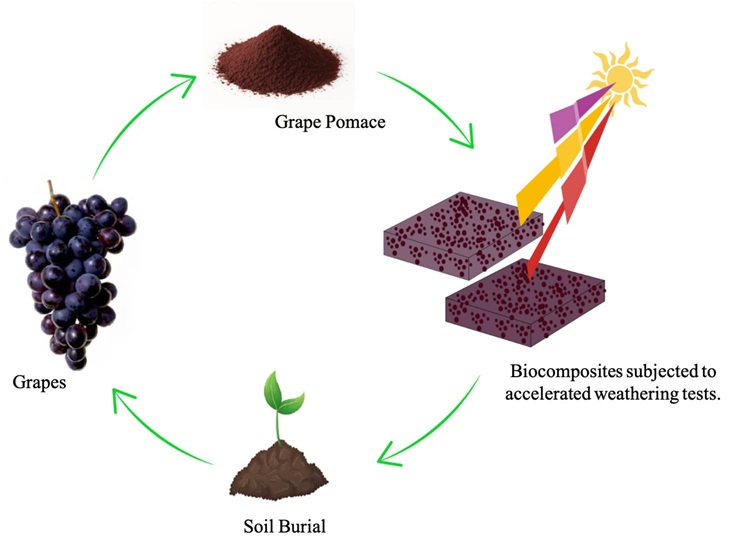
6) Unveiling the structure of Delftia acidovorans Lipopolysaccharide: insights into O-antigen and lipid A
A.Notaro, L.Sturiale, A.Palmigiano, D.Garozzo, I.Speciale
DOI:
https://doi.org/10.1016/j.carres.2025.109586
Delftia acidovorans is a Gram-negative bacterium traditionally considered as an environmental organism, although it has recently been identified as an opportunistic pathogen in immunocompromised patients. Furthermore, this bacterium was also recognized as part of the crypt-specific core microbiota in healthy mice. Despite its detection in various contexts, the chemical structure of its lipopolysaccharide (LPS) remains uncharacterized.
Here, the structure of O-antigen and lipid A from
Delftia acidovorans were characterized by combining chemical approaches with spectroscopic and spectrometric studies. In detail, the O-antigen is found to consist of a novel glycan sequence composed of 3)-α-L-rhamnose-(1→4)-α-D-glucose-(1→ disaccharide in the linear backbone, where glucose is in turn branched at the O-2 position with a β-D-
N-acetyl-glucosamine, that is non-stoichiometrically acetylated at position O-6. Whereas lipid A is predominantly represented by a hexa-acylated species with a symmetric distribution of acyl chains.
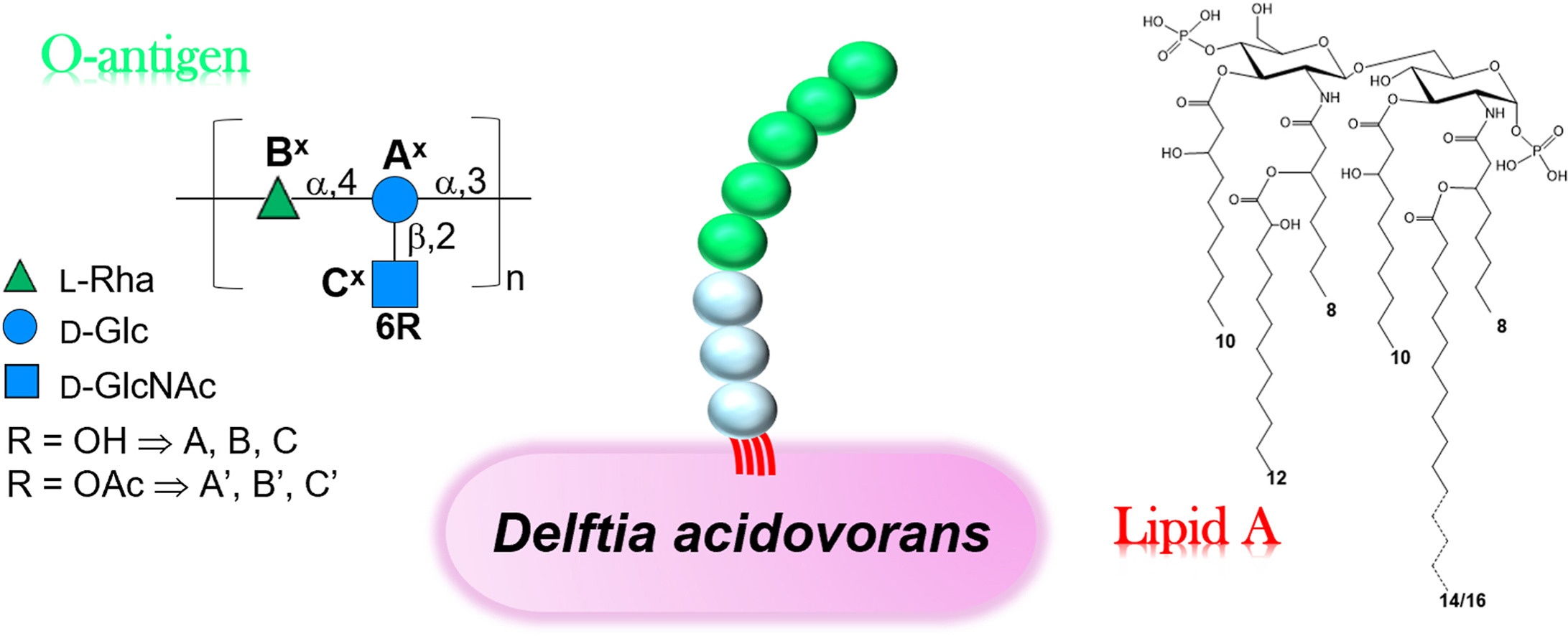
7) MAN2A2-related glycosylation defects in autism and cognitive delay
S.Treccarichi, M.Vinci, L.Cirnigliaro, A.Messina, A.Palmigiano, F.Pettinato, A.Musumeci, V.Chiavetta, S.Saccone, L.Sturiale, F.Calì, R.Barone
DOI:
https://doi.org/10.1038/s41598-025-09400-5
Glycosylation is a post-translational modification essential for proper protein folding and function, with significant roles in diverse biological processes, including neurogenesis. MAN2A2 enzyme is required for proper N-glycan trimming/maturation in the N-glycosylation pathway. Whole-exome sequencing of a trio revealed two potentially causative variants in the MAN2A2 gene in a patient with autism spectrum disorder (ASD) and cognitive delay. The first variant, c.1679G > A (p.Arg560Gln), was inherited from the unaffected father. It is located within the alpha-mannosidase middle functional domain, a region essential for mannose metabolism and alpha-mannosidase enzymatic activity. The second variant, c.3292C > T (p.Gln1098Ter), was inherited from the mother and it generated a premature stop codon. These variants resulted in a compound heterozygous condition in the patient. Prediction using the DOMINO tool suggested an autosomal recessive inheritance pattern. Notably, the MAN2A2 gene is highly expressed in several brain regions. The encoded enzyme, an alpha-mannosidase, is localized to the Golgi apparatus, the cellular organelle where the processing and maturation of N-glycans occurs. In silico analyses consistently classified both variants as likely pathogenic, supported by structural prediction analyses that indicated significant disruptions in protein architecture. Glycosylation analyses demonstrated impaired N-glycosylation, evidenced by the accumulation of immature serum glycoprotein N-glycans including disease-specific hybrid-type species. Further investigations are essential to elucidate the role of this gene in ASD and cognitive delay.
8) Binary and Ternary Nanocomposite Membranes for Gas Separation Incorporating Finely Dispersed Carbon Nanotubes in a Polyether Block Amide Matrix
D.Vuono, G.Clarizia, D.Zampino, P.Bernardo
DOI:
https://doi.org/10.3390/polym17030314
This work addressed the fine dispersion of Multiwalled Carbon Nanotubes (MWCNTs) in a polymer matrix to obtain Mixed Matrix Membranes (MMMs) suited for gas separation. Not-purified MWCNTs were effectively loaded within a polyether block amide (Pebax®2533) matrix, up to 24 wt%, using ultrasonication as well as a third component (polysorbate) in the dope solution. The obtained flexible thin films were investigated in terms of morphology, thermal properties, characterized by SEM, FT-IR, DSC, TGA, and gas permeation tests. The response to temperature variations of gas permeation through these nanocomposite specimens was also investigated in the temperature range of 25?55 °C. Defect-free samples were successfully obtained even at a significantly high loading of CNTs (up to 18 wt%), without a pre-treatment of the fillers. A remarkable enhancement of gas permeability upon the nanocarbons loading was reached, with a threshold value at a loading of ca. 7 wt%. The addition of polysorbates in the ternary MMMs further improves the dispersion of the filler, enhancing also the permselectivity of the membrane.
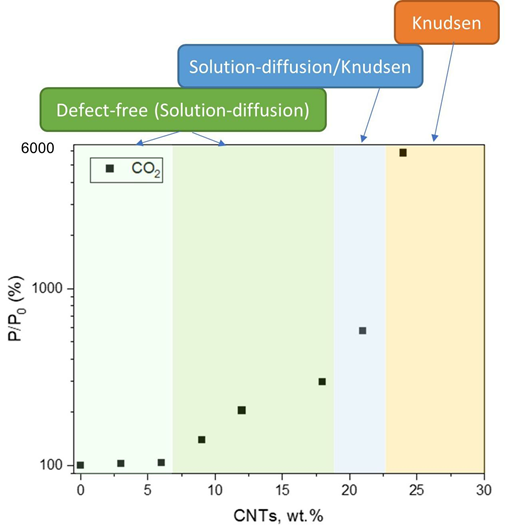
9) Cyclodextrin-based iodophors with high iodine retention in solid state and in dilute solutions
F.Spitaleri, S.Dattilo, D.Aleo, M.G.Saita, A.Patti
DOI:
https://doi.org/10.1016/j.carbpol.2024.122969
Iodine is a broad-spectrum antiseptic with the advantage of not inducing bacterial resistance, but its use is limited by volatility. This issue can be overcome by using "iodophors", which are molecular systems able to retain iodine and provide its sustained release. Cyclodextrins have proven effective in stabilizing iodine in solution through the formation of complexes, the preparation of which in solid form could offer additional benefits in terms of handling and storage. A series of cyclodextrins (CD) were tested for their ability to form solid complexes with iodine and it was found that the addition of potassium iodide in the solid-state preparation of the complexes significantly increases both iodine incorporation and long-term stability compared to the solids obtained without added potassium iodide. Dilute aqueous solutions of the obtained complexes were monitored for their iodine content in different conditions and excellent stability was observed in some cases. Furthermore, these cyclodextrin-iodine complexes showed no cytotoxic effects on human corneal epithelial cells (HCE-2) while displayed very high antimicrobial (against
Staphylococcus epidermis) and antiviral (against Human adenovirus 5) activities. These findings highlight the potential of cyclodextrins as a versatile platform for the development of solid iodophors as an alternative to the traditional povidone-iodide formulation.
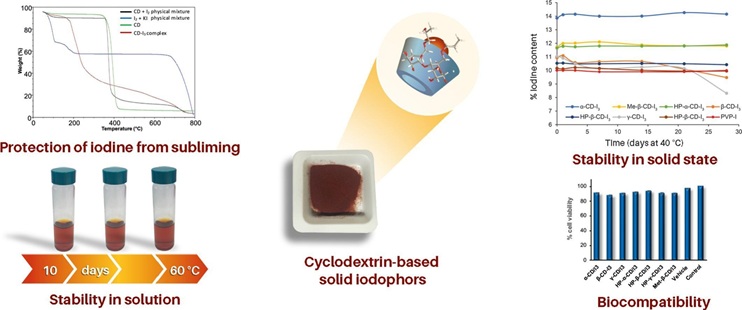
10) Calixarene-based cryopolymers: a versatile smart materials platform suitable for both air and water remediation
V.Giglio, S.Dattilo, G.Gambera, P.Riccobene, F.Cunsolo, T.Mecca
DOI:
https://doi.org/10.1016/j.envres.2025.121736
Environmental pollution caused by the release of hazardous chemicals into air and water poses serious risks to ecosystems, public health, and infrastructure. Addressing these challenges requires innovative materials capable of both detecting and removing diverse pollutants. However, most current materials are designed to target either air or water pollutants, leaving a gap in multifunctional solutions. This study presents a pioneering approach to bridge this gap by introducing two novel calixarene-based cryopolymers, combining the macroporous structure of cryogels with the recognition capabilities of calixarenes. The synthesized materials were found to be valuable tools for detecting and capturing pollutants in both air and water, taking advances from a dual mechanism of absorption: by chelation through the acidic functionality inserted on calixarene scaffold and by a host-guest complex formation with calixarene cavity through cation-p interactions. As an additional advantageous property, they have the ability to detect the presence of NO
2 in the air through an evident color change. These multifunctional materials represent a breakthrough in environmental remediation, offering a single platform for addressing pollutants in air and water, marking a step forward in pollution management technologies.
